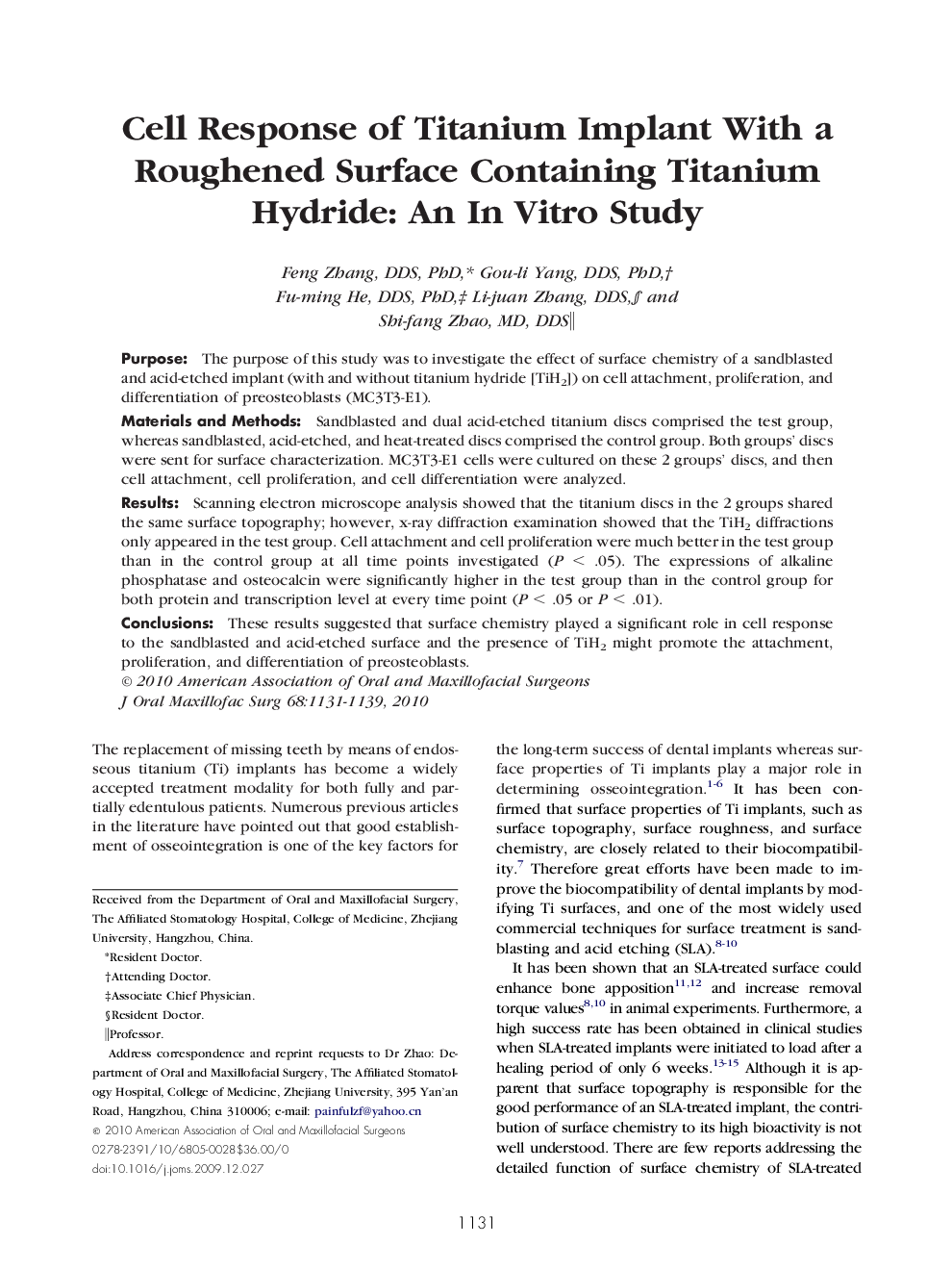| Article ID | Journal | Published Year | Pages | File Type |
|---|---|---|---|---|
| 3155016 | Journal of Oral and Maxillofacial Surgery | 2010 | 9 Pages |
PurposeThe purpose of this study was to investigate the effect of surface chemistry of a sandblasted and acid-etched implant (with and without titanium hydride [TiH2]) on cell attachment, proliferation, and differentiation of preosteoblasts (MC3T3-E1).Materials and MethodsSandblasted and dual acid-etched titanium discs comprised the test group, whereas sandblasted, acid-etched, and heat-treated discs comprised the control group. Both groups' discs were sent for surface characterization. MC3T3-E1 cells were cultured on these 2 groups' discs, and then cell attachment, cell proliferation, and cell differentiation were analyzed.ResultsScanning electron microscope analysis showed that the titanium discs in the 2 groups shared the same surface topography; however, x-ray diffraction examination showed that the TiH2 diffractions only appeared in the test group. Cell attachment and cell proliferation were much better in the test group than in the control group at all time points investigated (P < .05). The expressions of alkaline phosphatase and osteocalcin were significantly higher in the test group than in the control group for both protein and transcription level at every time point (P < .05 or P < .01).ConclusionsThese results suggested that surface chemistry played a significant role in cell response to the sandblasted and acid-etched surface and the presence of TiH2 might promote the attachment, proliferation, and differentiation of preosteoblasts.
